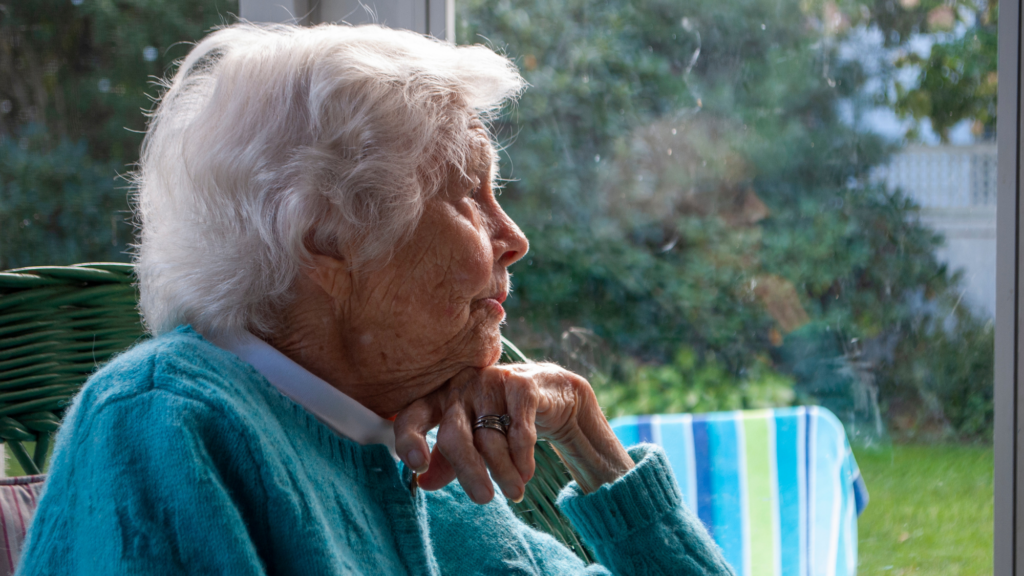At the age of 30, I had a serious health issue – the details don’t matter, apart from the minor issue of possible death. At the time I was told there was a 10% risk of death over the next 5 years. “However”, my esteemed clinician advised, “that’s only about a 2% risk of death each year”.
At least, it appeared, I mightn’t have to worry about growing old.
We don’t like to think of death. In fact, we’re wired to avoid it. In 2019, neuroscientist Yair Dor-Ziderman and his colleagues studied volunteers as they looked at images of faces. At the same time, on screens, words relating to death (such as “funeral” or “burial”) flashed up. By measuring electrical activity, they were able to track how the brain associated images.
It wasn’t too long before they were able to verify when the brain would be connecting death-related concepts with other trigger images. When the volunteers were presented with images of their own face, however, something different happened – the brains simply refused to associate these with the concept of death. Death, it turns out, is something that happens to other people.
This is a problem when it comes to age. Research from 2014 found that, the more one was afraid of death, the more one discriminated against older people. Terror management theory refers to the idea that, in order to minimise anxiety, we avoid anything that reminds us of ageing.

What is an old person, anyway? The Australian Human Rights Commission studied this in 2013, and found most people considered people over the age of 65 “old”.
This, by the way, is a German invention: Chancellor Otto Von Bismarck, the “Iron Chancellor”, introduced the world’s first national pension system. Initially set at age 70, it was later revised to 65, and the concept stuck, and the world went on to adopt a retirement age of 65. This was in 1889, when life expectancy was approximately 39.
(Incidentally, it’s not really true that everyone reported those over the age of 65 as being “old”. Those aged 50 and above thought that being “old” was going to a nursing home, retiring – anything apart from a number. )
The first recognised social theory of ageing was proposed in 1961 by sociology professor Elaine Cumming. Called “Disengagement”, it proposed that people progressively turn inwards, and gradually withdraw from others, for the benefit of the individual and society.
While unsurprisingly unpopular, most critics failed to address that the theory was in fact observational – based on data from the Kansas City Study of Adult Life, a longitudinal study tracking several hundred adults from middle to old age.
Largely in reaction to the theory of disengagement, in 1963 Robert Havighurst proposed the “Activity Theory”, which argues that maintaining activity patterns and values typical of middle age is necessary to a rich and satisfying life. It’s from this that we today derive the well-known “Healthy Ageing” model, spawning many a poster of seniors climbing mountains and winning triathlons. (It’s worth noting that Activity Theory was never based on scientific observation. Healthy Ageing has been criticised as an aspirational model – something to aim for, rather than one most can feasibly achieve.)
It’s also worth realising that ageing itself has changed with improved medical care and technology. In 1951, the average life expectancy in Australia was 69. Today’s average life expectancy is 82. Most seniors today are living to an age well beyond the lifespan of their parents.
This means that they are effectively living without a map – social norms expect people to be starting their families in their 20s and 30s, consolidating their careers in their 40s, and paying attention to their superannuation in their 50s. None of this includes a further 30 years of living.
Religious traditions have plenty to say on the subject of ageing.
It’s a difficult challenge, one the scientists appear to have trouble answering. Religious traditions, meanwhile, have plenty to say on the subject of ageing – though not necessarily as we might expect.
Vedic and Buddhist perspectives describe successful ageing in terms of embracing physical losses as an opportunity for spiritual gain. Judeo-Christian perspectives are more ambivalent about the equation of wisdom with age – the pages of the Hebrew Bible (the Old Testament) contain many stories of older people who are fallible rather than uniformly wise, but are offered the possibility of forgiveness and redemption. (A more hopeful perspective, perhaps, for those of us who hardly feel like sages.)
It also contains calls to all to consider our mortality. Confrontingly, the ancient book of Ecclesiastes insists that “it is better to go to a house of mourning than a house of feasting, for death is the destiny of every person; the living should take this to heart”.
How, then, shall we grow old and also be satisfied? The Harvard Ageing Study studied 724 individuals over 60 years. When specifically looking for happiness, they found that the actions most associated with satisfaction were any roles involved in maintaining and disseminating wisdom – a role that Professor George Vaillant described as “Keeper of the Meaning” in 2002.
It was not personal achievement or completion of individual goals that was consistently found to be of benefit. Rather, it was accepting our limited lifespan, and our responsibility to pass knowledge to the next generation. Not necessarily our wisdom, but our experience: our mistakes, our tribulations, the outcomes of the paths we followed as signposts to future generations.
We must break our programming and embrace our mortality – only then, will we live life as we should.
Neil Jeyasingam is Clinical Associate Professor of Psychiatry at the University of Sydney, and an Associate of the Centre for Public Christianity. He is also Director of the charity Wisdom-Connect, which aims to improve social inclusion of seniors, and is convening the Vivid panel “How to Grow Old Well and Try Not to Die” on 15 June.